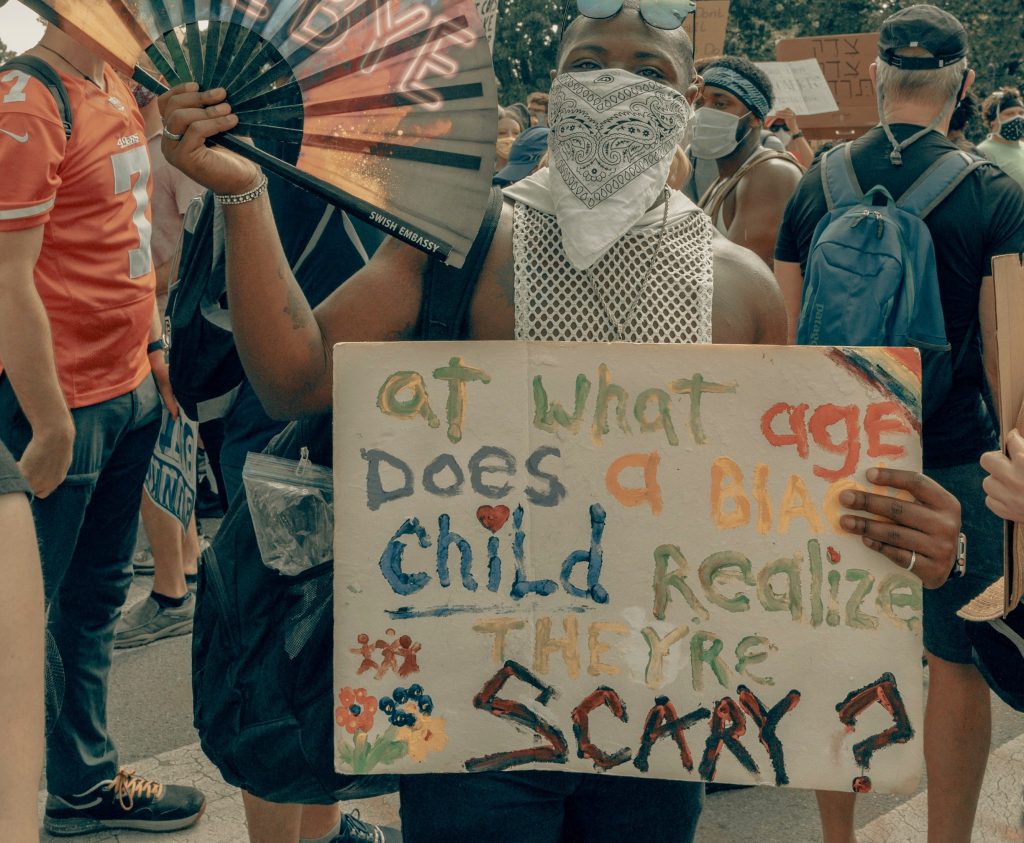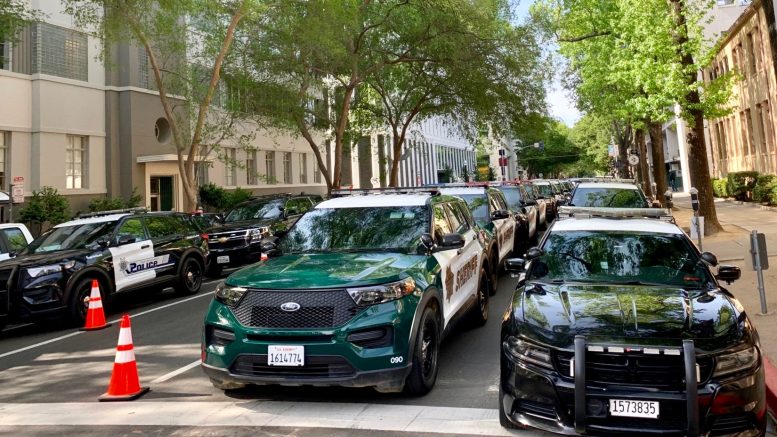By Stephen Maganini, the Sacramento Observer
This story is co-published with The Sacramento Observer, a newspaper with more than 58 years of bringing public service journalism to the Capital City.
One of the most critical tasks facing Sacramento and other American cities is how to improve and reform their police departments in the wake of a mounting number of fatal police shootings.
Last year, Black Americans — 13% of the U.S. population — accounted for 27% of the 1,144 people shot and killed by police, according to Mapping Police Violence, a nonprofit that tracks police shootings. Black Americans are almost three times more likely to be killed by police than White Americans, according to data collected since 2013. The disparity is even greater in California, where Black Americans are 3.6 times more likely to die at the hands of police than Whites.
The numbers haven’t gone down, despite passionate protests against police brutality and violence across America following the May 25, 2020, murder of George Floyd, an unarmed Minneapolis man suspected of passing a counterfeit $20 bill. Officer Derek Chauvin, a 19-year police veteran with a history of complaints, was convicted of second- and third-degree murder after a citizen videotaped him kneeling on Floyd’s neck for 9 minutes and 29 seconds.
When Sacramento City Manager Howard Chan announced the appointment of Deputy Chief of Operations Kathy Lester on Jan. 1 — to replace Daniel Hahn, Sacramento’s first Black police chief — several activists challenged the selection process, saying the community didn’t have enough input.
Chan, who under Sacramento’s city charter has the authority to hire and fire police officers, had his Natomas home targeted by dozens of angry protestors in March and July 2020. Each time, the protesters were met by a 30-member police SWAT team, Chan said.
Protestors had pounded on his garage door, declared “the blood is on your hands, Howard,” put out black bags representing body bags in Chan’s driveway and called for his resignation. None were arrested, but Chan said he and his family felt they could be in danger.
The demonstrators invoked the name of Stephon Clark, who was killed March 18, 2018, after being shot seven times in his grandmother’s south Sacramento backyard by two police officers who believed Clark — who was unarmed — had a gun. The officers were not prosecuted.
“We did an internal investigation and also asked the California attorney general to weigh in proactively, along with the federal Office for Civil Rights,” Chan told The OBSERVER. “In all instances, there was no basis to charge or discipline these officers.”
These tense times led Chan to engage several community leaders — Black, Latino and Asian — in the most recent selection process. The leaders and others interviewed during the process signed confidentiality agreements, which Chan said were necessary in the wake of the protests at his home.
The city also launched its first online police community input survey, which generated almost 1,700 responses, “which is pretty significant,” Chan said. “We used the responses with our recruitment firm to help and guide the selection process.”
The input survey, conducted in 12 languages, asked respondents to rank prospective chiefs’ qualities such as “relationship builder,” “cultural awareness and inclusion,” “politically savvy” and “emotional intelligence.” The police chief leads about 750 sworn officers and 350 professional staff members and administers the department’s $132 million annual budget.

The Sacramento OBSERVER surveyed online readers in March about their experience with the City’s police chief survey. About 50 people responded. Only about 30% of respondents — 80% of whom were residents of the city of Sacramento — said they participated in the City’s survey. The rest of the respondents either chose to not participate, or said they did not know about the City’s survey. More than half of The OBSERVER’s respondents said the City’s survey made them feel better about the selection process.
Several respondents said a diverse chief was important, but so is transparency and a willingness to fight police unions if necessary to bring officers accused of criminality or abuse to justice.
“The chief should think of every citizen as if they are family,” said one respondent.
Another said police officers need training on how to handle domestic violence and mental health issues. “The police do not make me feel more safe. I need a chief to change that.”
Two members of the Community Police Review Commission, launched by Chief Hahn — Keyan Bliss and Michael Wayne Marion Jr. — said the 10-member commission wasn’t consulted about the selection process. They told The OBSERVER they saw no signs that the problems associated with policing under Hahn and his predecessors, including use of excessive force, were being fully addressed.
“There should have been a community-driven hiring process,” said Bliss, a community organizer who’s now the commission’s vice chair. “Our commission is mandated to provide community participation, review and recommendations on SPD hiring processes. We weren’t even consulted on who the candidates were and how many were being considered. Even the city council doesn’t have a say.”
Chan responded that the council controls police funding — the last word on the hiring of a new chief.
Bliss, 36, said the citywide survey produced 1,698 responses that cited ethics, commitment to diversity, accountability and transparency, but didn’t go far enough.
“We need to ask if they recognize the history of racism in this country and what could be done better,” Bliss said. When it comes to traffic stops or use of force, every internal department report “has shown that Black people are more likely to be scrutinized … [and] are subject to use of force 4½ times more than Whites — double the national average.”
In these times “of great crises, who we choose to lead our communities can carry life-and-death consequences,” Bliss said. “After more than two years under a global pandemic, converging upon a multitude of crises that long preceded COVID-19, it has been proven to me that community members don’t just deserve transparency and accountability from Sacramento City leadership — they need it.
“Nowhere is it needed more than from its city manager and its police chief, two of the city’s most powerful positions before, during, and after moments of crisis,” Bliss said. “Under COVID conditions, I can understand City Manager Howard Chan’s urgency in finding a replacement for now former Sacramento Police Chief Daniel Hahn when announcing his early retirement after just four years on the job. But what I can’t help but feel profoundly disappointed in is the lack of transparency or competitiveness in City Manager Chan’s selection of new Chief Kathy Lester, Hahn’s second-in-command with 27 years served in a police department with a long-documented history of unfair policing and racist outcomes.”
Bliss, reiterating ideas he articulated in an op-ed, commented, “With all due respect to new Chief Lester and former Chief Hahn, I cannot say my hopes for transformation of SPD’s culture and practices are any higher for the first female police chief than they were for its first Black police chief.
“In the past four years, I have heard nothing from either Lester or Hahn that has risen beyond generic talking points and tired anecdotes that do well to tug at people’s heartstrings but largely skirt around the real-world experiences and objective data showing a consistent pattern of racial animus and discrimination by Sac PD against Sacramento’s Black residents and other communities of color.”
Bliss did praise Hahn’s use of community-based organizations “in the city’s response to longstanding crises such as homelessness and mental health — a consistent demand from community members. Along with supporting the creation of the Department of Community Response Hahn was the first chief to acknowledge that “Sacramento police officers cannot and should not be performing every role that responds to public safety needs.”
Hahn also “showed a willingness to share city resources and make space for some CBOs like Advance Peace and Brother 2 Brother to lead on youth violence prevention and gang intervention,” Bliss said, “which many Black residents will likely credit as the single biggest factor in giving Sacramento almost two full years of no youth homicides before the pandemic.”

Marion, 43, a police commission member who works for the U.S. Department of Education, thinks a new police chief should be chosen “very delicately.”
“We have to understand where we are as a community, as a region and as a country. We need somebody who not only understands the pain in our communities but understands the opportunities to help us go into the future,” he said. “We’ve gone through a time of civil unrest, pain and agony, people losing their jobs, their homes, their loved ones. … We need somebody who’s going to help bring the community together, not push us apart.”
Chan used a national consulting firm to run the chief selection process. Marion said he believes the firm should work with an array of law enforcement, community leaders and focus groups.
“We need to open it up to the best and brightest people to help move things forward,” Marion said. “The decision can’t be made in a vacuum. … The last thing we want is the community to think there was some type of funny business behind the scenes.”
Marion said a review of best hiring practices by other agencies across the nation would help Sacramento bridge the often contentious relationship between the community and law enforcement.
“I don’t think it’s a bad thing to involve the community,” Hahn, a veteran of 34 years in law enforcement, told The OBSERVER. “A lot of cities do that.”
Schenectady, New York, a city of about 65,000 that’s more than 20% Black, may be the first in the nation to allow a citizen review panel to vet candidates for chief.
Detective Lt. Paul Antonovich, who helped facilitate the process, told The OBSERVER that five members from diverse community organizations spoke with about half a dozen top candidates for 30-45 minutes each. The panel asked, “Why did you become a police officer and what was your engagement with police officers in your community prior to becoming an officer?”
The conversations proved “there’s no better way for us to get our expectations on the table,” Antonovich said. “We definitely had an inside look at the way candidates are interacting with community members that’s both positive and negative.”
Several candidates who looked strong going in “faltered during the conversation and maybe became defensive,” Antonovich said. “There have been a few people who went through the process that we’ve decided not to go with.”
Community activist William Rivas, who proposed the panel discussion, told “Matter-of-Fact” host Soledad O’Brien he’s confident the police department followed through on its pledge to involve more people in the decision.
“You have individuals like myself who come from the community who have been formerly incarcerated or who grew up in poverty. The police force has been open and welcoming,” Rivas said. “The greatest part of this project is we’re no longer asking for a seat at the table. We’ve created our own table.”
Marion said Schenectady’s approach sounds about right. “I would like to combine that citizen’s panel with members of law enforcement,” he said, adding that the city’s police commission he serves on was carefully selected.
Chan, who became Sacramento city manager in 2017, said he used a national recruiting firm at a cost of more than $20,000 before he chose Hahn.
After Hahn announced his retirement last year, Chan again hired a national recruiting firm, Wendy Brown Consulting.

Given heightened public awareness in the wake of George Floyd and others killed at the hands of police officers, issues around use of force and calls to defund police departments, “it was really challenging to get people to apply for the position,” even though it pays about $228,000 a year, Chan said. He also cited the “mass resignation of police chiefs, including reformer Carmen Best of Seattle,” who lacked the support of her city council.
After gathering input from city officials and community members, Chan said he chose three respected community leaders — not activists such as Bliss — to interview the top five candidates.
“We kind of fought like cats and dogs, so we agreed to disagree,” Chan said. ” In the end, “Chief Lester was at the top of their list.”
Lester, a Cordova High School dropout, former custodian, buffet hostess and U.S. Army veteran, started as a police dispatcher, then patrol officer, and worked her way up to SPD’s deputy chief of operations with stints in traffic, recruiting, internal affairs and criminal intelligence. Chief Lester is well known in north Sacramento, where she served as lieutenant.
A graduate of the Police Executive Institute, run by Chicago police veteran Charles Ramsey, Lester said America appears “to be all over the board when cities are looking to choose a police chief. Some choose with zero transparency and zero input — just a straight-up appointment — and then you have these wide-open panels and multiple community forums and town halls, and each candidate is paraded out.”
Lester, in a wide-ranging interview with The OBSERVER days after the K Street downtown shootings, acknowledged, “In Sacramento we have a lot of challenges with urban violence and workforce issues. It’s very important to get community input and make sure it is well-rounded and far-reaching. … Every city is different and every department has a different culture.
“It’s hard to say there’s a one-size-fits-all model.”
Lester added that with very active community-based organizations and significant policing challenges in an urban environment, “it was important to find a police chief who can navigate all those communities and be responsive. This is 27 years of my life’s work.”
Lester said she will seek input from the city’s stakeholders, including “your youth, your seniors, your business community, people across the political ideology and you’re not going to find a candidate who satisfies everybody, and who really is able to hear people.”
Given the racial climate in a nation continually marked by hate-driven mass shootings, “we have a huge challenge of leadership,” Lester said. “Out of 79 major city police departments, over 50 police chiefs had either resigned, retired or left their departments since the pandemic.”
Out of 688 sworn officers as of March, SPD was 69% White, 14% Hispanic, 9% Asian, 5% Black and the rest Filipino, American Indian or other, according to Lester. “Diversity is a challenge and we lost a ton of our diversity due to budget cuts and the pandemic. The current community service officer program includes a majority of women, and 75% of the recruits come from diverse backgrounds,” she said.
The city’s SPD page now features a transparency tab that includes the following links:
- Officer-involved shootings
- Death in custody
- Incidents of public interest
- Senate Bill 1421 releases
- Innovation, transformation and best practices
- Center for Police Equity – report and response
- Education and training materials
- General orders
- Reference manuals
- The Inspections and Standards Team – audit reports
- Body Worn Camera Project
- California Public Records Act
- Town hall meeting report
- Jaywalking citation statistics
- Vehicle stop data collection and information
- California Department of Justice report and recommendations
- Use-of-force information
There’s also a link for Public Records Act requests, Lester said, but the public no longer has to file a request to see the accusations against an officer. Thanks to Senate Bill 1421, which amended the penal code so local law enforcement can make various police records, including internal affairs reports, available, “these discipline releases are really good for our department when we have officers engaged in significant misconduct. … Now if we discharge a firearm or use great bodily force, or some type of sexual assault or were dishonest, those cases are now publicly disclosable.”
Lester said George Floyd’s murder set in motion many of these changes.
“What George Floyd did was open a big conversation we needed to have,” she said. “If we don’t see that as an opportunity to do things better, we’re all failing in public service. … We should be working on prevention. This needs to be a communitywide approach. We all needed to be working on these things together.”
Bliss said he’s willing to keep an open mind, but said his commission wasn’t told the results of the department’s input survey or how the selection process played out. “We don’t have any idea what happened,” he said. “It’s an opaque process that doesn’t truly allow for community input. Even the city council doesn’t have a say in this hiring process. All we can do is ask questions.”






Be the first to comment on "Sacramento city manager discusses why the city now seeks community input when selecting the police or fire chief, while activists call for more transparency"